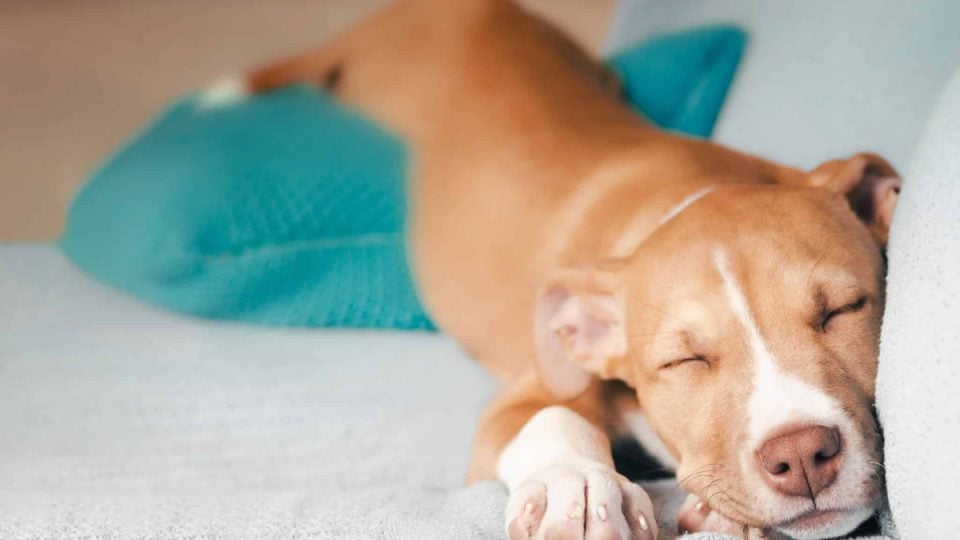From curling up in a doughnut to lying on their back with their paws in the air, dogs look cute while sleeping! Dogs can sleep in all sorts of different positions. While these don’t necessarily ‘mean’ anything in the same way that we don’t consciously pick the position we sleep in, they may indicate a certain level of trust and safety around their pet parents.
But do dogs change sleeping positions throughout the night? In short—yes! Discover everything you need to know about how and where your dog sleeps, plus some expert advice about when you might need to discuss your dog’s sleeping habits with your vet.
Why Do Dogs Change Their Sleeping Position?
It’s normal for dogs to have multiple sleeping positions, and you might even notice changes to how your dog sleeps throughout the year. This can be due to all sorts of reasons, including:
- temperature
- comfort
- space
- health issues
- feeling secure
- personal preference
- relationships with other family members (humans and animals)
If your dog can’t seem to get comfortable or continues to change their sleeping position due to a medical condition, speak with your vet.
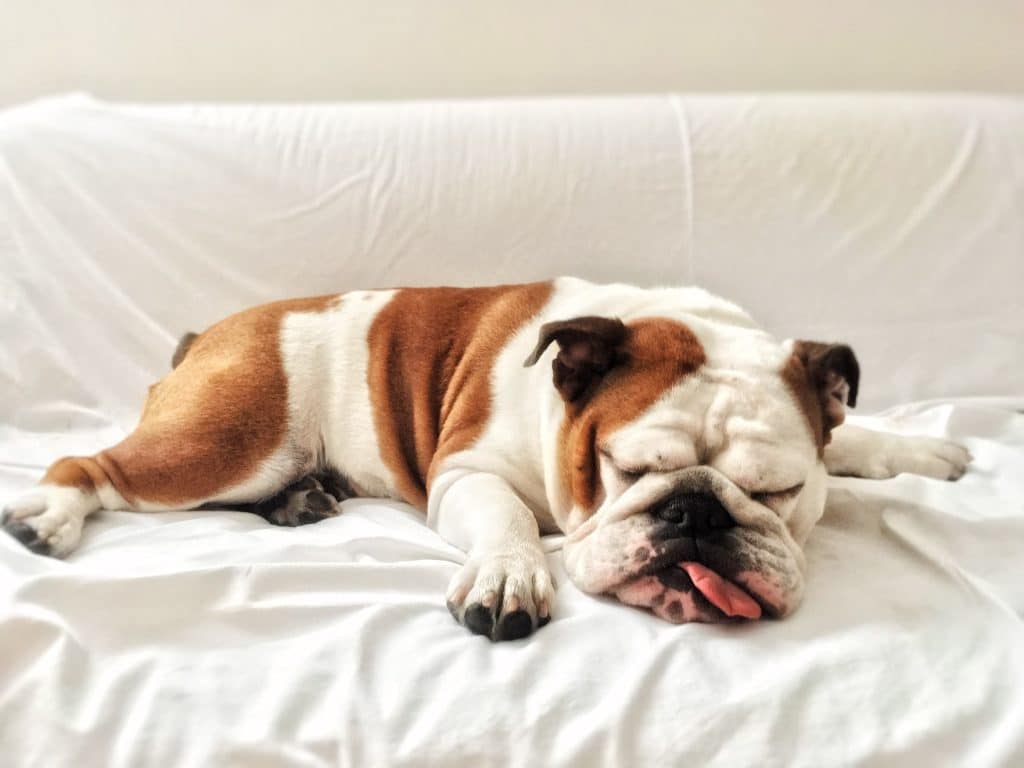
iStock/marcoventuriniautieri
Dog Sleeping Positions: A Full Breakdown
There isn’t a lot of research into the sleeping positions of dogs, but we do know that they tend to sleep up to 80% of the time overnight and up to 37% of the day. Dogs also seem to prefer sleeping near their pet parents—how adorable!
But what does your dog’s sleeping position say about them? Steffi Trott, the founder of SpiritDog Training, breaks down what these different sleeping positions might mean—and whether they give any clues about your dog’s wellbeing or their bond with you.
When your dog sleeps solo
- The doughnut. If your dog sleeps curled in a ball with their paws tucked under them, they often feel secure and protected. Some dogs also sleep like this when they’re cold.
- Side sleeping. When dogs sleep on their side, they feel comfortable and at ease. This position allows for more relaxed muscles, indicating a sense of security and trust. They often sleep like this on the ground or in their favourite dog bed.
- Lion’s pose. If your dog sleeps with their head resting on their front paws, it suggests they’re alert and ready to jump into action, showing a balance between relaxation and attentiveness.
- The Superman or “sploot“. When a dog lies on their belly with their legs stretched out behind them, it’s often associated with playfulness and high energy. It also allows them to cool down quickly!
- Burrowed under blankets or clothes. Dogs burrow under blankets or clothes for warmth, comfort, and security. This behaviour is an instinctive response to create a protected, den-like environment. Cave dog beds are also a great option if your pet loves to burrow.
- Sleeping with a raised head. When a dog sleeps with their head raised on a pillow or toy, it typically indicates a need for comfort or relief from potential respiratory or digestive issues.
- On their back with their belly up. Sleeping on their back with their belly exposed shows they trust and feel comforted by you. This position also allows them to cool down quickly.
Even though your dog’s sleeping position might indicate something about your dog’s wellbeing, veterinarian Dr Corinne Wigfall suggests not reading too much into it. She explains that research is still new regarding the link between dog sleeping positions and their meaning.
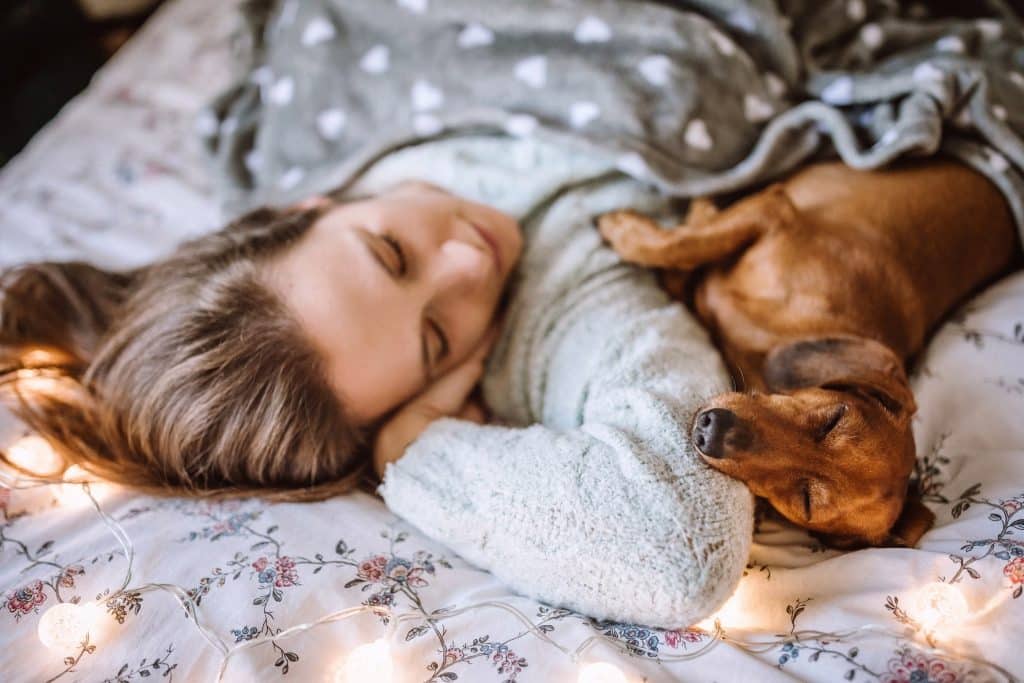
iStock/Pekic
When your dog sleeps with you or other pets
If your dog sleeps on your bed or if you have multiple dogs, this can also give some clues about their wellbeing.
- Cuddled in a pile. You’ll often see puppies sleeping in a ‘cuddle puddle’, and adult dogs who have a close relationship with one another might also sleep like this. “This position suggests dogs feel comfortable and secure with each other’s company,” Trott says. “If a dog who typically sleeps in this position suddenly stops, it could indicate a change in their relationship or a possible health issue that needs attention.”
- Back to back. Dogs who sleep back-to-back or opposite pet parents or other dogs have a strong bond with them and feel secure in their presence. It also suggests that they trust you and feel protected. Letting your dog sleep with you only furthers the trust your dog has in you.
- Head resting on your chest, arm, or leg. A dog who sleeps with their head resting on you or another dog may indicate they feel safe and comfortable in your presence. It can also be a sign your dog loves you deeply.
- Between your legs. Dogs who sleep between their owner’s legs may feel particularly close to their owner and seek comfort and security from them. However, this position may also suggest they’re feeling insecure or anxious and need reassurance from their pet parent.
Do Dog Sleeping Locations Have Special Meaning?
While the shape of your dog’s body contributes to how they sleep, the place they choose to snooze can also give clues to their feelings. For example, some dogs love sleeping on the sofa, while others might prefer a comfortable crate. Others will pick different places to sleep depending on their mood! Here are some of your dog’s most common sleeping locations and what they might mean.
Your dog sleeps on the floor
“If a dog chooses to sleep on the floor, it may indicate that they prefer a cooler sleeping environment or they want to be closer to the ground,” Trott says. Additionally, she says dogs might sleep on the floor in certain areas where they feel safer.
Your dog sleeps on the sofa
Some dogs love their creature comforts, and the sofa is their favourite spot! Trott suggests that in addition to the comfort factor, dogs sleep on the couch to be close to their pet parents. This is a great time to bond with your dog!
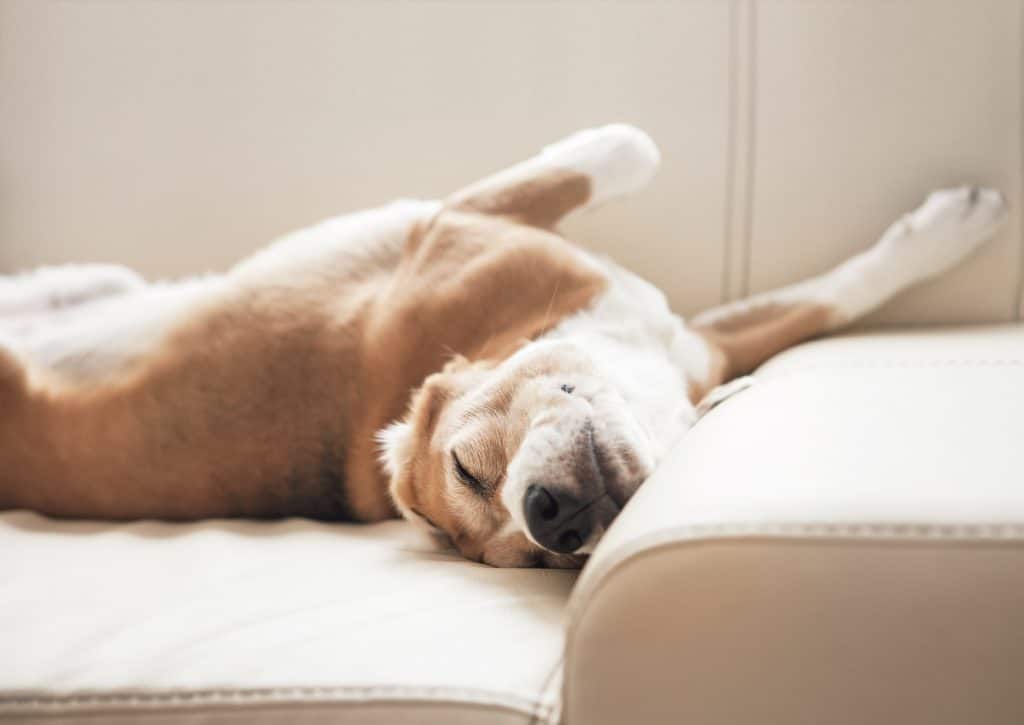
iStock/Solovyova
Your dog sleeps outside in the sun
“Dogs who enjoy sleeping outside in the sun may prefer a warmer environment or enjoy being in the fresh air,” Trott says. However, she adds that pet parents should closely monitor their dogs when they’re outside, especially in the summertime. Provide plenty of fresh water and shade for your dog to avoid heatstroke.
Your dog sleeps in bed with you
Trott says that when your dog sleeps in bed with you (aka their favourite person), it demonstrates how close the bond is between you two and how much your dog trusts you. It can also give them a sense of security and comfort if they’re anxious or fearful at night.
Your dog sleeps in a crate
“Sleeping in a crate can be a sign of training and discipline, where the dog is accustomed to sleeping in their designated area,” Trott explains. She adds that crates provide a sense of security and privacy for dogs who may feel overwhelmed in larger, more vulnerable spaces.
Does My Dog’s Sleeping Position Affect Their Sleep Quality?
Even if your dog chooses some strange positions while sleeping, they’re probably happy about it. This is great because good quality sleep is essential for your dog’s health. Most adult dogs sleep for around 11-12 hours daily, but this is split into shorter periods.
Additionally, puppies may sleep up to 18-20 hours per day, while a senior dog may need 20 hours. Again, the key is knowing what’s normal for your dog. Trott suggests it’s a good idea to monitor your dog’s sleeping patterns and consult a veterinarian if you notice any changes or concerns.
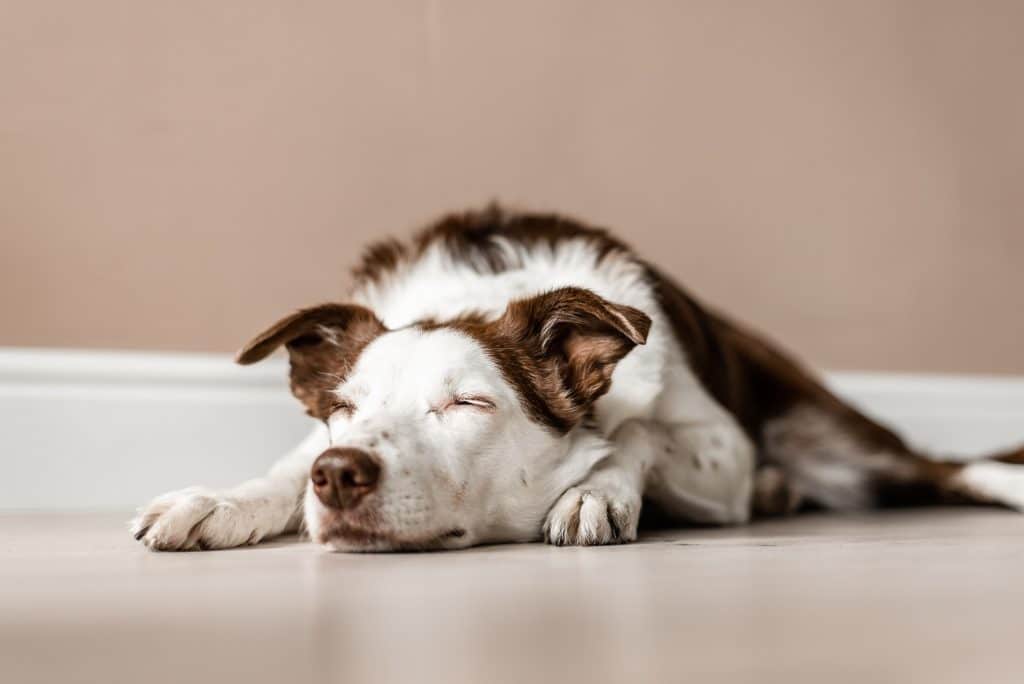
iStock/Photography by Adri
Trott suggests the following if you’re wondering what you can do to help your dog get a good night’s sleep.
- Provide a cosy sleeping area. Choose a comfortable bed that suits your dog’s size and breed. It should be cushioned enough to support their joints and muscles, and placed in a quiet, relaxing spot away from noise and distractions.
- Clean their sleeping area. Regularly clean and wash your dog’s bedding with pet-safe cleaning products to ensure their space is free of dirt, bacteria, and allergens. Cleaning helps prevent skin irritations, infections, and other health issues.
- Consider the temperature. Make sure the sleeping area is at a comfortable temperature for your dog, depending on the weather and the season. Dogs who tend to overheat may prefer a cooler place, while those who feel cold may need extra blankets or a heated dog bed.
- Provide easy access to water. Ensure your dog has access to clean, fresh water throughout the day, including during their sleeping hours. This is especially important for dogs who tend to get thirsty at night or have medical conditions requiring them to stay hydrated. A dog water fountain is a great way to give your dog unlimited water access.
- Keep your dog’s preferences in mind. Pay attention to your dog’s sleeping patterns and preferences, and adjust as needed. For example, if your dog prefers to sleep in a crate, ensure it’s comfortable and cosy with enough space.
When To Talk To A Vet About Your Dog’s Sleeping Positions
Most sleeping positions don’t impact your dog’s health and wellbeing. But, a dog’s sleeping position when sick might look slightly different from usual. Dr Wigfall recommends looking out for the below signs and symptoms when your dog is sleeping or getting ready to sleep, as they can indicate health issues.
- Struggling to change sleeping positions easily
- Struggling to get up after sleeping
- Vocalising, whining, or crying when trying to change positions
- Having broken sleep or getting up at night
- Sleeping more than usual
- Any tremors or changes in breathing patterns. If possible, record these and get them checked by a veterinarian.
- Loud snoring while sleeping. This can be a sign of BOAS (brachycephalic obstructive airway syndrome) in flat-faced dog breeds.
